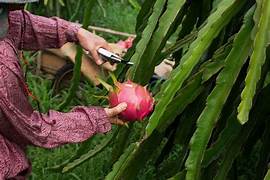Growing dragon fruit is an exciting venture for any gardening enthusiast, offering both aesthetic appeal and delicious rewards. However, the journey to cultivating these exotic fruits can be fraught with pitfalls if one is not careful. In this article, we’ll explore five critical mistakes to avoid when growing dragon fruit, ensuring your gardening efforts lead to bountiful harvests.

1. Underestimating the Importance of Pot Size
A fundamental mistake many new dragon fruit growers make is choosing a pot that’s too small for their plant. Dragon fruit plants require ample space to thrive, as their root systems are extensive and need room to grow. Opting for a large pot, at least 20 gallons in size, is advisable. This not only accommodates the plant’s growth needs over several years but also obviates the need for frequent repotting. A larger pot also allows for the establishment of a sturdy trellising system, encouraging vertical growth and facilitating easier management and harvesting of the fruit.
2. Overwatering: A Common Pitfall
While dragon fruit, being a tropical cactus, requires more water than its desert counterparts, overwatering can lead to detrimental effects such as root rot. The balance in watering is crucial; the soil should be allowed to dry out between waterings to prevent moisture-related diseases. Paying attention to the pot’s size, as mentioned earlier, can help mitigate this issue by providing a buffer against overwatering, thanks to the larger soil volume’s moisture retention properties.
3. Neglecting Proper Training and Pruning
The structural integrity and productivity of your dragon fruit plant can be significantly impacted by how well you train and prune it. Without proper guidance, the plant may grow in an uncontrolled manner, leading to less fruit production and potentially damaging the plant’s structure. Regularly training your dragon fruit plant to grow upwards and pruning excessive growth ensures that energy is directed towards fruit production rather than unnecessary vegetative growth.